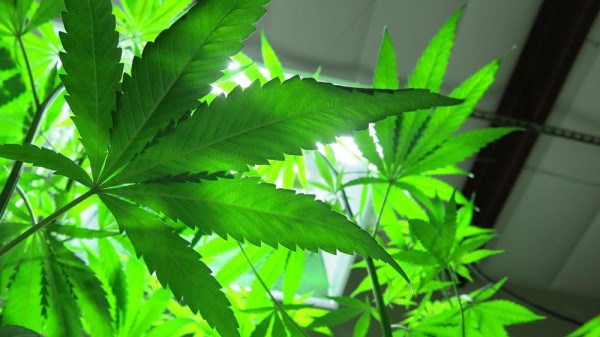Katelyn Baker
Well-Known Member
Newswise - North Dakota farmers are growing industrial hemp for the first time in more than 70 years, and the New Crops research program in the North Dakota State University Department of Plant Sciences is conducting research to assist them.
Professor Burton Johnson leads the New Crops program and the research is conducted at the NDSU Research Extension Center at Langdon, North Dakota, by agronomist Bryan Hanson.
Federal regulation of industrial hemp production changed recently. Previously, according to federal law, all Cannabis sativa plants were defined as marijuana regardless of the Tetrahydrocannabinol, or THC, content. Industrial hemp is legally defined as less than 0.3 percent THC, which makes it unsuitable for drug and therapeutic uses.
The Agricultural Act of 2014 allowed research institutions and state departments to grow industrial hemp if allowed under state laws. In March 2015, North Dakota Gov. Jack Dalrymple signed House Bill 1436, which creates guidelines for industrial hemp production, and the North Dakota Department of Agriculture then implemented the industrial hemp pilot program. NDSU began conducting research in 2015 and farmers could apply to produce industrial hemp under state and federal guidelines.
Seventeen farmers applied to the pilot project and four were chosen. The selected farmers' applications indicated that they would grow industrial hemp for hemp oil and a building material called "hempcrete," which is manufactured from hemp plant pulp, and as a transitional crop for conversion from conventional to organic production.
Other possible uses for Industrial hemp include fiber, food, paper and textiles. It also can help suppress weed growth and improve soil quality. North Dakota Agriculture Commissioner Doug Goering said, "The program's primary goal is to increase our knowledge of how industrial hemp fits into the existing agriculture landscape and economy."
The research at the Langdon Research Extension Center in 2015 included 12 industrial hemp varieties originating from Australia, Canada, Finland and France. Three of the tested varieties are used for both grain and fiber production, three are primarily for grain production and six are primarily for fiber production. All varieties were evaluated for grain and fiber production, as well as various agronomic traits such as seed mortality, seedling vigor, plant height and test weight.
The results of the trials indicated the Canadian industrial hemp cultivars better adapted to the Langdon region of North Dakota and grain and fiber yields were similar to those seen in Canada, where industrial hemp has been grown since 1998.
As a student-focused, land grant, research university, NDSU serves its citizens. NDSU is listed in the top 100 research universities in the U.S. for R&D in agricultural sciences, chemistry, computer science, physical sciences, psychology, and social sciences, based on research expenditures reported to the National Science Foundation.

News Moderator: Katelyn Baker 420 MAGAZINE ®
Full Article: Research Program Studies Industrial Hemp
Author: Newswise Staff
Contact: info@newswise.com
Photo Credit: Luke Runyon
Website: Newswise
Professor Burton Johnson leads the New Crops program and the research is conducted at the NDSU Research Extension Center at Langdon, North Dakota, by agronomist Bryan Hanson.
Federal regulation of industrial hemp production changed recently. Previously, according to federal law, all Cannabis sativa plants were defined as marijuana regardless of the Tetrahydrocannabinol, or THC, content. Industrial hemp is legally defined as less than 0.3 percent THC, which makes it unsuitable for drug and therapeutic uses.
The Agricultural Act of 2014 allowed research institutions and state departments to grow industrial hemp if allowed under state laws. In March 2015, North Dakota Gov. Jack Dalrymple signed House Bill 1436, which creates guidelines for industrial hemp production, and the North Dakota Department of Agriculture then implemented the industrial hemp pilot program. NDSU began conducting research in 2015 and farmers could apply to produce industrial hemp under state and federal guidelines.
Seventeen farmers applied to the pilot project and four were chosen. The selected farmers' applications indicated that they would grow industrial hemp for hemp oil and a building material called "hempcrete," which is manufactured from hemp plant pulp, and as a transitional crop for conversion from conventional to organic production.
Other possible uses for Industrial hemp include fiber, food, paper and textiles. It also can help suppress weed growth and improve soil quality. North Dakota Agriculture Commissioner Doug Goering said, "The program's primary goal is to increase our knowledge of how industrial hemp fits into the existing agriculture landscape and economy."
The research at the Langdon Research Extension Center in 2015 included 12 industrial hemp varieties originating from Australia, Canada, Finland and France. Three of the tested varieties are used for both grain and fiber production, three are primarily for grain production and six are primarily for fiber production. All varieties were evaluated for grain and fiber production, as well as various agronomic traits such as seed mortality, seedling vigor, plant height and test weight.
The results of the trials indicated the Canadian industrial hemp cultivars better adapted to the Langdon region of North Dakota and grain and fiber yields were similar to those seen in Canada, where industrial hemp has been grown since 1998.
As a student-focused, land grant, research university, NDSU serves its citizens. NDSU is listed in the top 100 research universities in the U.S. for R&D in agricultural sciences, chemistry, computer science, physical sciences, psychology, and social sciences, based on research expenditures reported to the National Science Foundation.

News Moderator: Katelyn Baker 420 MAGAZINE ®
Full Article: Research Program Studies Industrial Hemp
Author: Newswise Staff
Contact: info@newswise.com
Photo Credit: Luke Runyon
Website: Newswise


